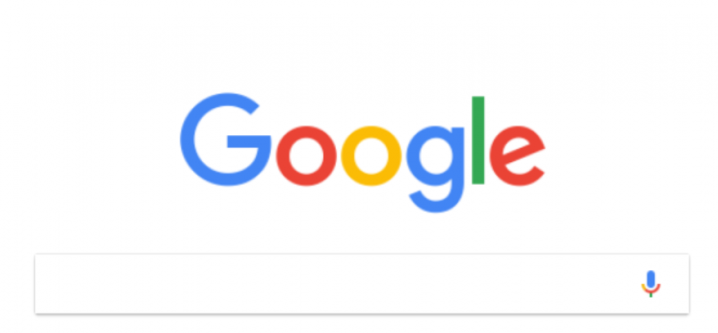 With products ranging from search engines and cloud computing to smartphones and software, Google is one of the world’s most recognizable brands. In fact, a 2016 study conducted by Canaccord Genuity ranked Google as the world’s second most valuable brand at $101.8 billion, surpassed only by its rival Apple. There are a few things entrepreneurs and business owners can learn about the Mountain View company’s brand identity strategy, including the following.
With products ranging from search engines and cloud computing to smartphones and software, Google is one of the world’s most recognizable brands. In fact, a 2016 study conducted by Canaccord Genuity ranked Google as the world’s second most valuable brand at $101.8 billion, surpassed only by its rival Apple. There are a few things entrepreneurs and business owners can learn about the Mountain View company’s brand identity strategy, including the following.
#1) Branding Can Make a Business a Household Name
Google has shown that a strong branding strategy can make a business a household name. When you use a search engine, for example, you may refer to it as “Googling,” regardless of whether you use Google, Bing, Yahoo or any other search engine. The Merriam-Webster dictionary even lists the words and Google and Googling as a verb meaning to obtain information online using the search engine.
In 2016, Google’s Michael Krantz discussed the widespread popularity of the company’s brand name. In a blog post, Krantz compared the Google brand to zippers, baby oil and trampolines, all of which were once trademarked brands that became common household names. Krantz further explains that while Google is pleased so many people are talking about its brand, the terms Google and Googling should only be used when referring to making searches on the company’s signature search engine.
#2) Simple Logo Designs Work Best
Sometimes simple logo designs work best, such is the case of Google. If you’re unfamiliar with what it was and how it became what it is today, read this article on Google logo history. You’ll see the first Google logo is painstakingly difficult to read as it features awkward, unsymmetrical text with 3D effects. The current Google logo, on the other hand, features a flat, clean sans-serif font type without any 3D or dropshadow effects.
The logo for Google’s Chrome web browser also features an updated, simplistic design. While both the old and new logo feature the same multi-colored ball, the new one features a flat design without dropshadowing or other unnecessary effects.
Google isn’t the only company to embrace a simple logo design. Microsoft has changed its logo several times since its inception in 1975. The company’s original logo featured a two-tone gray design in a bubbly font type. The new Microsoft logo, launched 2012, features four colorful squares alongside the company’s name in a gray color and simplistic font.
#3) Extensions Drive Brand Recognition
Google Search might be the Mountain Company’s most popular product, but it offers dozens of other products or services, all of which help to drive recognition for its brand. Some of these extensions include:
- Google Analytics
- Google Alerts
- Google Voice
- Google Docs
- Google Trends
- Google Pay
- Google Maps
- Google Flights
- Google Home
- Gmail
- and many more
Notice a pattern? With the exception Gmail, which is a shortened version of Google Mail anyway, all of these extensions include Google’s brand name. Whenever someone uses one of these products, they are exposed to the Google’s name, thus strengthening the company’s brand.
#4) Branding Can Offset the Need for Advertising
Google has also shown that businesses don’t have to exhaust all their capital on advertising to succeed. When was the last time you saw a billboard or TV commercial for Google? While the company advertises some of its products using commercials, they are few and far between. Instead, it uses a strong and recognizable brand to drive sales.
Research cited by the Search Engine Watch shows Google spent just 1.2 percent of its revenue on advertising in 2011. To put that number into perspective, small companies spend about 10 percent of their revenue on advertising while large companies spend 13 percent.
Rather than spending money to advertise its products and services, Google actually makes money on advertising. While Google rarely discloses its financials, some reports suggest the company earns 89 percent of its annual revenue ($66 billion) from advertising. The company’s AdWords platform allows business owners to create their own ads for Google Search, YouTube and other partner websites.
#5) Work Culture Affects a Business’s Brand
A business’s work culture will affect its brand. Of course, Google is known for its positive, employee-friendly work culture. Every year, Google receives more than 2.5 million applications from tech-savvy professionals who are eager to work at the company. In 2017, Fortune ranked Google as the number one company to work for. This was the sixth consecutive year in which Google received this accolade, attesting to its popularity for employees.
Some of the perks offered to Google employees include free chef-prepared meals, healthcare, dental care, haircuts, laundry service, on-site gyms, nap pods and video games. Additionally, the company recently changed its parental-leave policy, giving new moms longer time off work. This resulted in a 50 percent lower turnover rate among its working moms. While offering so many perks to employees costs money, it’s played an important role in shaping Google’s brand.
Based on this information, it’s safe to safe the Google brand is here to stay. The company has worked hard to nurture and grow its brand over the years into the powerhouse name that it is today. Business owners and entrepreneurs should follow in Google’s footsteps by creating a strong brand image.



